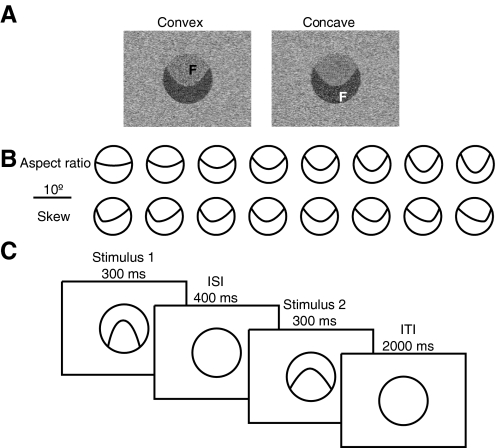FIG. 1.
A: example of convex and concave stimuli. A curved stereo- and luminance-defined contour separated 2 image regions, both appearing behind a circular aperture. The region on one side of the contour appeared closer to the viewer and thus as the figure (“F”) and the region on the other side of the contour appeared farther from the viewer and thus as the background. The same display could be convex or concave depending on which side of the contour was the figure. B: aspect ratio and skew were parametrically varied. The 2 stimuli on each trial were either identical, or 1, 2, or 4 steps removed from each other in this stimulus space. Each individual stimulus occurred equally often in each of these 4 conditions, so any differences in response between conditions reflect the relationship only between the 2 stimuli in a trial, not the specific stimuli themselves. Orientation (top/bottom of the aperture) and brightness were counterbalanced. C: time sequence for a trial.

